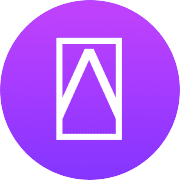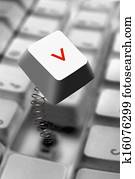
So this seems to be as big wasting resources.

Classical TeX (and eTeX) have only 16 such families available (and four of them are always allocated). The new math family is allocated only for one math symbol.
#Up caret symbol how to
It is educational example how to add new math symbol from selected font in plain TeX.To use this shortcut, obey the following instructions: Place the insertion pointer in the right place.
#Up caret symbol windows
This shortcut works in Microsoft Word and in Windows only.
#Up caret symbol code
you got it! (154)ĪSCII code 03 = ETX ( End of Text, hearts card suit )ĪSCII code 04 = EOT ( End of Transmission, diamonds card suit )ĪSCII code 05 = ENQ ( Enquiry, clubs card suit )ĪSCII code 06 = ACK ( Acknowledgement, spade card suit )ĪSCII code 11 = VT ( Vertical Tab, male symbol, symbol for Mars )ĪSCII code 12 = FF ( Form feed, female symbol, symbol for Venus )ĪSCII code 21 = NAK ( NAK Negative-acknowledge )ĪSCII code 23 = ETB ( End of trans.\newcommand$ To get the letter, character, sign or symbol "^" : ( Circumflex accent or Caret ) on computers with GNU/Linux like Ubuntu (only with GNOME desktop):ġ) Press the key combination "CTRL + SHIFT + u" on your keyboard, and not let go.Ģ) While pressing "CTRL + SHIFT + u", type on the keypad "5e", which is the hexadecimal value of the letter or symbol "^" in ASCII table.ģ) Then stop pressing the key combination "CTRL + SHIFT + u", and.


IBM includes support for this code page in the hardware of its model 5150, known as "IBM-PC", considered the first personal computer. In this way was added the ASCII characters ranging from 128 to 255. Also 128 characters were added, with new symbols, signs, graphics and latin letters, all punctuation signs and characters needed to write texts in other languages, such as Spanish. In 1981, IBM developed an extension of 8-bit ASCII code, called "code page 437", in this version were replaced some obsolete control characters for graphic characters. So with this set of only 128 characters was published in 1967 as standard, containing all you need to write in English language. This code arises from reorder and expand the set of symbols and characters already used in telegraphy at that time by the Bell company.Īt first only included capital letters and numbers, but in 1967 was added the lowercase letters and some control characters, forming what is known as US-ASCII, ie the characters 0 through 127.
The American Standard Code for Information Interchange, or ASCII code, was created in 1963 by the "American Standards Association" Committee or "ASA", the agency changed its name in 1969 by "American National Standards Institute" or "ANSI" as it is known since.


 0 kommentar(er)
0 kommentar(er)
